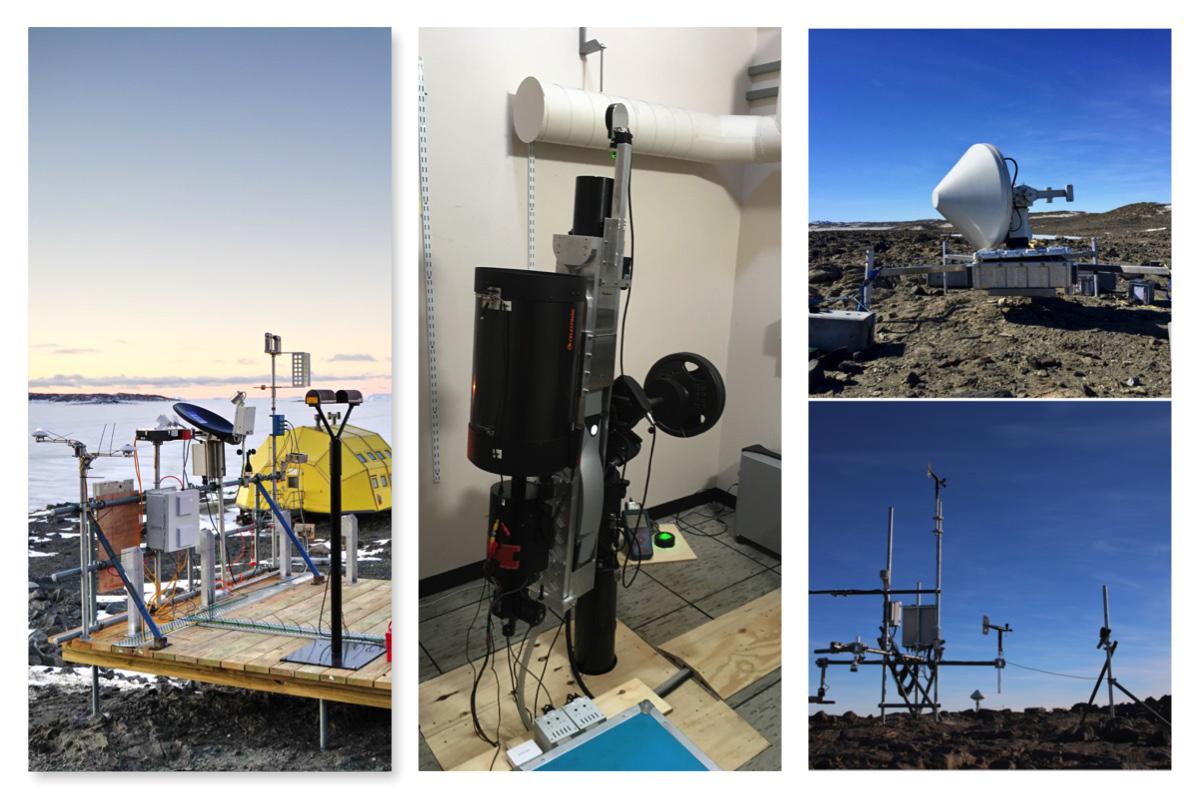Chasing clouds in Antarctica: cool stories from a physics graduate
It’s a novel way to escape the heat, but credit to physics graduate Tom Chambers who spent his summer exploring clouds in Antarctica.
Tom travelled to Davis Station to deploy atmospheric measurement instruments to understand the role of clouds and precipitation in the Earth’s climate system.

Guest writer - Tom Chambers
Tom is a graduate of our Bachelor of Science (Advanced) with a double major in experimental and theoretical physics.
He continued his studies with a Master of Philosophy (MPhil) and is now completing a PhD in atmospheric physics and optics in the School of Physical Sciences.
I’ve always been curious about how natural systems work and I find the many mysteries and unsolved problems within this area to be deeply fascinating.
The Earth’s atmosphere hosts a wide range of complex and beautiful phenomena which can help us to understand the fundamental processes that lead to their formation. Understanding of these processes is crucial to overcoming important issues such as climate change and the forecasting of extreme weather events.
Over the past summer, I travelled to Davis Station, Antarctica. The aim was to deploy some atmospheric measurement instruments that we have developed as part of an international program to understand the role of clouds and precipitation in the Earth’s climate system.
Clouds are currently one of the largest sources of uncertainties in climate models and this is especially the case over the Southern Ocean and Antarctic regions.
Clouds in this part of the world contain significant mixtures of ice and super cooled liquid water that is not accurately represented in models.
My research investigates the microscopic processes that occur inside of clouds such as the growth of ice crystals and water droplets and the role of turbulence in their formation.
To do this we have developed a laser-based instrument that can make 3D holograms of these tiny cloud particles. This allows us to measure the shape, size and clustering of these particles which can be used in improving climate and weather models.
By comparing our surface precipitation observations to instruments that our capable of measuring high into the atmosphere, we can begin to build an understanding of the full life cycle of clouds and better represent them within climate models.

A shimmering Aurora Australis lights the skies above us aboard the Aurora Australis icebreaker.

Some of the instruments installed at Davis Station as part of our observation campaign. LIDAR image credit: Andrew Klekociuk, Australian Antarctic Division
The Antarctic trip
To get to Antarctica we spent two weeks on the ice-breaking vessel Aurora Australis. We deployed our instruments on the ships railing to measure precipitation over the course of this voyage.
Our instruments were located alongside a suite of other instruments from a range of research organisations which will help to improve our understanding of this complex part of the planet.
We were lucky enough to observe many beautiful distractions along the way ranging from leopard seals to a stunning Aurora Australis lighting the skies above us.
On reaching Davis Station, Antarctica, we moved our instruments onto specifically built measurement platforms and much of our time was spent installing an extensive range of instruments around the station limits.
Some of these instruments are pictured below, including a high-powered laser that can measure directly inside of clouds developed by the Australian Antarctic
Division and a flux tower for measuring snow drift properties along with a scanning precipitation radar provided by our Swiss collaborators from École polytechnique fédérale de Lausanne (EPFL).
Davis Station is a particularly dry part of the world and so we will leave our instruments there for the coming year to build up an understanding of this crucial link within the Earth’s atmospheric system.
While we were on the mainland, we had the chance to see some really beautiful landscapes and animals such as the nesting Adelie Penguins.

Nesting Adelie penguins on Gardner Island, a short walk over the frozen sea ice from Davis Station.
What’s next?
Now that we have returned to noticeably warmer circumstances, our next step will be to deploy our instruments on a weather balloon to measure directly inside of the clouds. Such measurements could be performed routinely to provide a significant increase in the amount of available data as the current approach is to run dedicated aircraft campaigns which can be quite expensive.
We will also be analysing the data from the Antarctic instruments that gets sent back to us over the next year. We will also analyse the data from observations of another campaign last year in the Snowy Mountains.
My time in Antarctica was a thoroughly rewarding opportunity for me. The observations over this campaign are truly unique and the discoveries that this can lead to are quite exciting. I encountered a range of breath-taking sights and the amazing people that I got to know made the experience truly incredible.
